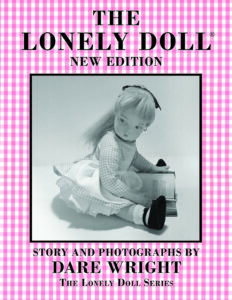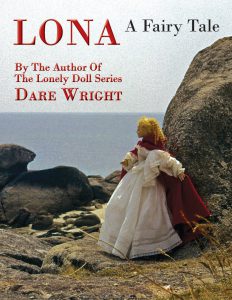
Dare Wright’s Journey Of Artistry And Imagination
Dare Wright’s journey began in Toronto on December 3, 1914. Her parents’ marriage was already fragile by the time Dare was born, and dissolved before Dare turned three. Her father, Ivan, took Dare’s older brother, Blaine, to New York, while Dare and her mother, Edith Stevenson Wright, moved first to Youngstown, Ohio and then settled in Cleveland. There, Edie established herself as an internationally prominent portrait artist. Brother and sister were not to reunite until they were in their twenties, and Dare would never see her father again.
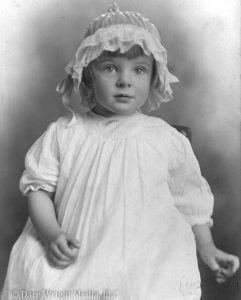
Dare showed an early creative aptitude while she was growing up in Cleveland. Encouraged by her mother Edie, Dare learned to sketch, paint, write, and sew. Her favorite books were fairy tales like Undine and Tales From The Secret Kingdom that were full of enchantment, spells, and challenges for a heroine to conquer. An ethereally beautiful child, Dare looked very much like the illustrations of mythical Undine herself – a lovely water sprite whose love for a handsome prince was doomed because she wasn’t fully human.
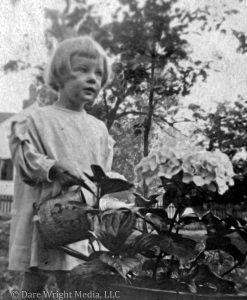
We are all composed of particles of the stars buried deep within our bodies, which Dare seemed to radiate with an external luminosity. As she grew up, conversations paused and heads turned when she walked quietly into a party.
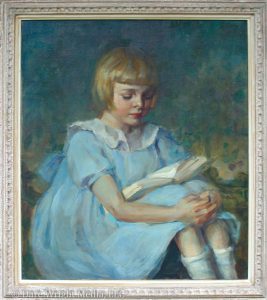
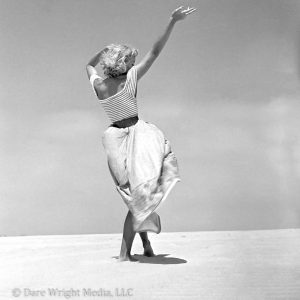
Dare moved to New York in the fall of 1933 to study painting and acting. Almost nineteen and a stunning beauty, Dare seemed a natural for show business. She did get a small part on Broadway in Pride and Prejudice but was never entirely comfortable performing in public. Fortunately, the same shyness which prevented Dare from projecting herself onstage could be interpreted as cool and alluring in a fashion photograph. Dare found steady work as a New York model.
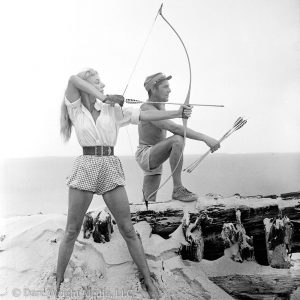
In 1941, Dare and her brother Blaine met in New York’s Central Park for the first time since they were separated as children at the ages of two and five. Now twenty-six and twenty-nine, they discovered that they had the same dry sense of wit, spoke in a similar clipped cadence, and unconsciously mirrored each other’s gestures and facial expressions.
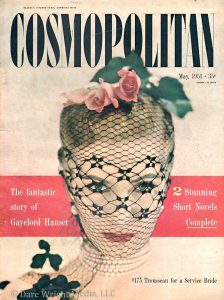
Dare continued to model for major fashion magazines, including a 1951 cover on Cosmopolitan, while she moved closer to the point where she could make a living as a photographer without having to put herself on public display. Her painter’s eye for artistic composition helped bridge the transition from model to professional photographer. Dare’s fashion photography was published throughout the 1950s in Good Housekeeping and other national magazines of the period.
Dare never married. Blaine’s wartime British friend, Philip Sandeman, broke off an engagement to Dare in 1948, writing to say that she wasn’t “a real woman.” Philip died in a plane crash three years later, and Dare was left to try to figure out his cryptic message for the remainder of her life. Was she only half-woman like the naiads and selkies of her childhood fairy tales, and therefore unable to have a fully human relationship? Dare secretly took many self-photographs in her apartment and on deserted beaches where she sometimes posed nude – as vulnerable as a nymph.
There was an unconscious seductiveness and naiveté about Dare that men found irresistible. Married and single, they fell under her spell and wanted to own this intriguing package.
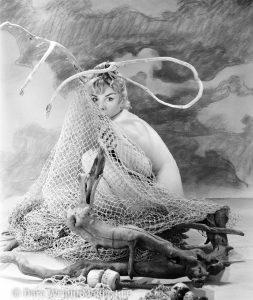
Proposals were proffered like bouquets. One suitor mailed Dare a live butterfly. When she opened the envelope, the insect’s powdered remains sifted lightly to the floor. Although Dare rejected their offers of marriage, many of these men remained her friend, holding the rueful memory of their unrequited love as one-by-one they eventually married others. The man dearest to her, whom Dare called her only true love, returned that love and admiration with courtly affection lasting more than sixty years.
Dare and her mother Edie traveled to sunny islands throughout the world. They stayed with Greta Garbo’s friend Gayelord Hauser in Sicily’s Taormina, explored sea grottos in the Virgin Islands, and returned many times to North Carolina’s remote Ocracoke Island. Carrying costumes and props in a minuscule French car, they explored picturesque villages in Brittany to photograph scenes for Dare’s book, LONA, A Fairy Tale. Wherever they went, Dare and Edie delighted in making new friends, and painted delicate watercolors of their travels.
From Broadway, Modeling And Photography To Author Of Best-Selling Children’s Stories
In the mid-1950s, Dare began photographing a children’s storybook about the adventures of a lonely doll named Edith and her two teddy bear friends. What began as a playfully creative collaboration with her young godchild evolved into a new genre of children’s literature. Dare’s both haunting and endearing black and white photographs illustrated Edith and the bears’ escapades. The text was simple, but sophisticated. Central to the storyline was the reassuring theme that Edith and the bears constituted a family and, no matter how much trouble Edith got into, that bond would never be broken.
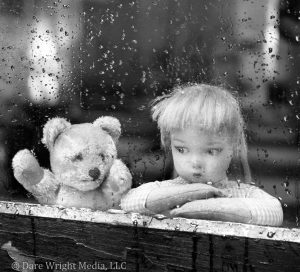
Published in 1957, The Lonely Doll brought Dare widespread acclaim as both an author and creative photographer. It quickly made the N.Y. Times list of best-selling children’s books. Dare went on to write and photograph nine more popular books in The Lonely Doll Series, as well as ten other titles.
Dare held on to a childlike wonderment throughout her life. Her intellect and wit were those of an extremely intelligent adult, yet she kept the ingenuous curiosity of a six-year-old. This gave Dare the rare ability to write her books from the perspective of a child without ever being patronizing.

More than six decades after they were first published, Dare’s books continue to delight new generations of readers. The U.K.’s Guardian newspaper/magazine recently named The Lonely Doll as the number one illustrated children’s book of all time.
Dare died in 2001 at the age of eighty-six after a long hospitalization. She was cared for and loved by the godchild with whom she had first imagined The Lonely Doll.
